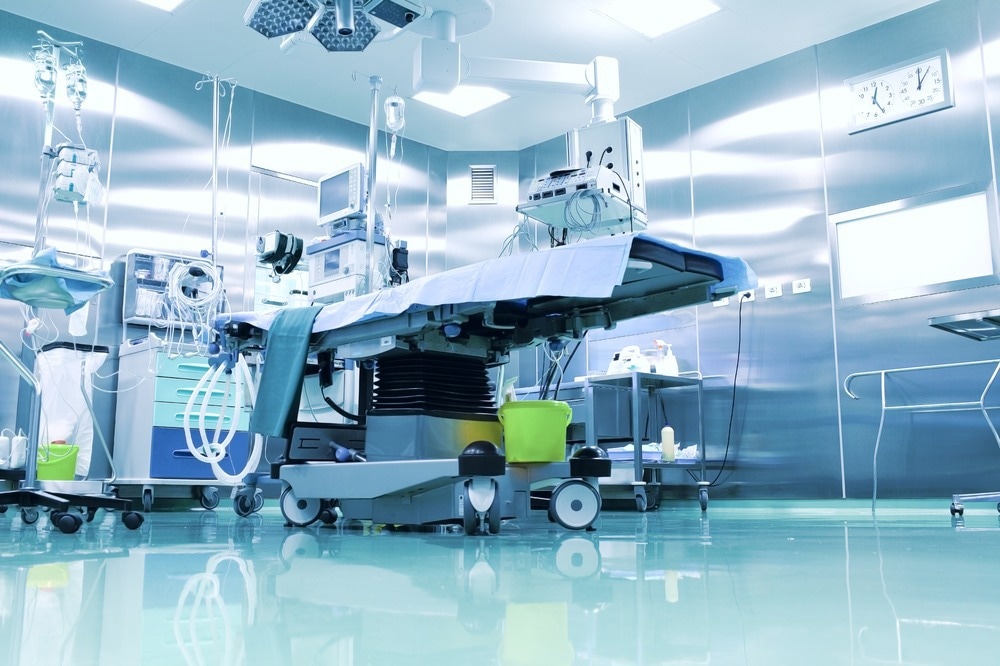In a recent study published in Nature Communications, researchers presented magnetic soft-robotic chains (MaSoChains) that use magnetic and elastic energies to fold themselves into large stable assemblies compatible with magnetic navigational technologies and have potential applications in improving minimally invasive surgery.
 Study: Self-folding soft-robotic chains with reconfigurable shapes and functionalities. Image Credit: sfam_photo/Shutterstock
Study: Self-folding soft-robotic chains with reconfigurable shapes and functionalities. Image Credit: sfam_photo/Shutterstock
Background
Compared to conventional open surgeries, minimally invasive surgeries provide advantages such as reduced recovery time, lower pain and discomfort, and a lower chance of opportunistic infections. While minimally invasive surgery often involves working in constrained environments in vivo using small surgical tools that are pushed through narrow apertures and channels along a supporting catheter sheath, robotic technologies have drastically improved the stability and precision of such surgeries.
Rapidly progressing robotic technology has provided better imaging qualities, three-dimensional (3D) modeling of the in vivo environment, precise drug delivery, and in some cases, fully automated surgical procedures.
The development of 3D printing, micromolding, and functional soft materials such as hydrogels that respond to stimulus and shape memory polymers has greatly advanced the miniaturized surgical tool technology. However, despite the development of complex and functional miniaturized tools, the diameter of the catheter sheath continues to be the limiting factor, even when the surgical target locations are larger.
About the study
In the present study, the researchers introduced a class of MaSoChains that contain rigid and soft segments that are 3D printed and assembled with neodymium iron boron (NdFeB) magnets. These MaSoChain configurations can be inserted into the narrow catheter. Still, when pushed out of the catheter, the soft regions bend and allow the rigid regions to join, forming a pre-programmed structure.
Pulling the MaSoChain back through the catheter will reverse the shape while pushing it along will reassemble it into the desired shape, making the tool maneuverable through narrow insertion apertures.
The researchers used these MaSoChains to develop a tethered endoscope coupled with a steering magnet, an onboard camera, and a working channel. They used it to perform a biopsy on a stomach model. Multimaterial 3D printing was used to fabricate the soft and rigid segments, and then rigid segments were assembled using two pairs of NdFeB magnets for stability. The dipole directions of the two pairs were assembled to be opposite to reduce the dipole movement in the rigid segments.
The elastic energy of the soft segments was calculated by affixing one of the rigid segments on a substrate and applying a uniform but varying magnetic field with rotation using three NdFeB magnets fixed inside the rigid segments. The elastic torque of the soft segment was assumed to be equal to magnetic torque, which was calculated using the orientation of the NdFeB magnets, the external magnetic field, and the angle difference between the two.
Polyimide-based flexible printed circuit boards were integrated with the MaSoChains to test the functionalities and features of MaSoChains further. Three MaSoChain segments were used to design the tethered capsule endoscope, one segment containing a camera with integrated light-emitting diodes (LEDs), one with a large NdFeB steering magnet, and one channel module containing biopsy forceps.
Results
The results indicated that MaSoChain technology can be used to address one of the fundamental challenges of minimally invasive surgery, where the narrow diameter of the catheter sheath limits the functionality and geometry of miniaturized surgical tools.
The MaSoChains are narrow enough to pass through the small aperture of the catheter sheath but can assemble into large functional structures when they emerge from the other tip of the catheter. Furthermore, current magnetic navigational systems can be used with this MaSoChain technology.
The self-folding capabilities allow MaSoChains to be assembled into various geometries, and since the technology is based on elastic and magnetic energies, the length of the catheter sheath can control the folding process, which in itself is repeatable, allowing the assembly and disassembly of the structure.
Apart from demonstrating the ability of MaSoChains to form a tethered endoscope, the researchers also showed that MaSoChains can be folded such that all angles of the surgical location are accessible without the dynamic stability of the structure being compromised.
Additionally, the use of LEDs to design a shape-sensing structure, which indicates when the structure is assembled into the correct shape, was also demonstrated. MaSoChains integrated with flexible electronics were also folded to form a heating surface containing preprogrammed thermal patterns.
Conclusions
Overall, the findings reported that MaSoChain technology could be integrated with other flexible electronics and customized to design a wide range of surgical tools which are not limited by the diameter of the catheter sheath and can significantly improve the scope of minimally invasive surgeries.